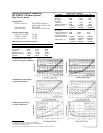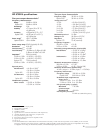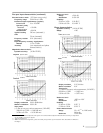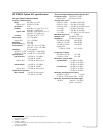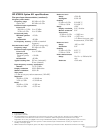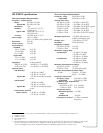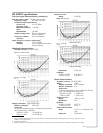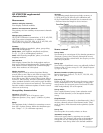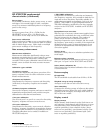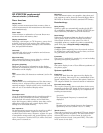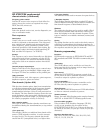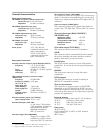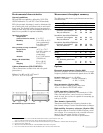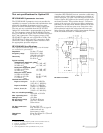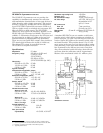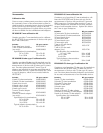
17
HP 8753ET/ES supplemental
characteristics (continued)
Sweep trigger
Set to either continuous, single, group sweep, or exter-
nal trigger. Set external trigger to take a complete
sweep or to measure individual points in a frequency,
power or list sweep.
Power
Set source power from -20 to +5 dBm for the
HP 8753ET
1
or from -85 to +10 dBm for the
HP 8753ES
2
. Power slope can be set in dBm/GHz.
Power meter calibration
Select continuous leveling or use a correction table to
modify source power. The correction table is created
with an initial single sweep. Make single or multiple
power meter readings at each frequency.
Data accuracy enhancement
Measurement calibration
Measurement calibration significantly reduces mea-
surement uncertainty due to errors caused by system
directivity, source and load match, tracking, and
crosstalk. Full two-port calibration removes all the sys-
tematic errors to obtain the most accurate measure-
ments.
Calibration types available
• Frequency response
Simultaneous magnitude and phase correction of fre-
quency response errors for either reflection or trans-
mission measurements.
• Response and isolation
Compensates for frequency response and directivity
(reflection) or frequency response and crosstalk
errors.
• Enhanced response calibration
Corrects for frequency response and source match for
transmission measurements, and provides one-port
calibration for reflection measurements.
• One-port calibration
Uses test set port 1 or port 2 to correct for directivity,
frequency response and source match errors.
• Two-port calibration
Compensates for directivity, source match, reflection
frequency response, load match, transmission frequen-
cy response and crosstalk for an S-parameter test set.
Crosstalk calibration can be omitted. Available on
HP 8753ES analyzers.
• TRL*/LRM* calibration
Compensates for directivity, reflection and transmis-
sion frequency response, and crosstalk in both the for-
ward and reverse directions. Especially suitable for
calibrating non-coaxial environments, such as in test
fixtures. TRL*/LRM* is a special implementation of
TRL/LRM calibration, modified for the three-sampler
receiver in the HP 8753ES. Available on HP 8753ES
analyzers.
Interpolated error correction
With any type of accuracy enhancement applied, inter-
polated mode recalculates the error coefficients when
the test frequencies are changed. The number of
points can be increased or decreased and the
start/stop frequencies can be changed, but the result-
ing frequency span must be a subset of the original cal-
ibration frequency span. System performance is not
specified for measurements with interpolated error
correction applied.
Velocity factor
Enters the velocity factor to calculate equivalent elec-
trical length.
Reference plane extension
Redefine the plane-of-measurement reference to other
than port 1 or port 2 of the HP 8753ET and 8753ES.
Select default calibration kit
Select from a list of standard calibration kits or choose
a user-defined kit.
Data averaging
IF bandwidth:
The IF bandwidth is selectable from 6 kHz to 10 Hz
Weighted sweep-to-sweep averaging:
Averages vector data on each successive sweep.
Trace smoothing
Computes the moving average of adjacent data points.
Smoothing aperture defines the trace width (number
of points) to be averaged, and ranges from 0.25% to
20% of the trace width.
Display control
Display formats
Single-channel, dual-channel overlay (both traces on
one graticule), dual-channel split (each trace on sepa-
rate graticules), three-channel split (each trace on
separate graticules), three-channel overlay (three
traces on one graticule), quad-channel overlay (four
traces on one graticule), quad-channel split (each
trace on separate graticules).
1. -85 to +5 dBm with Option 004.
2. +8 dBm maximum with Option 075 or 014.



